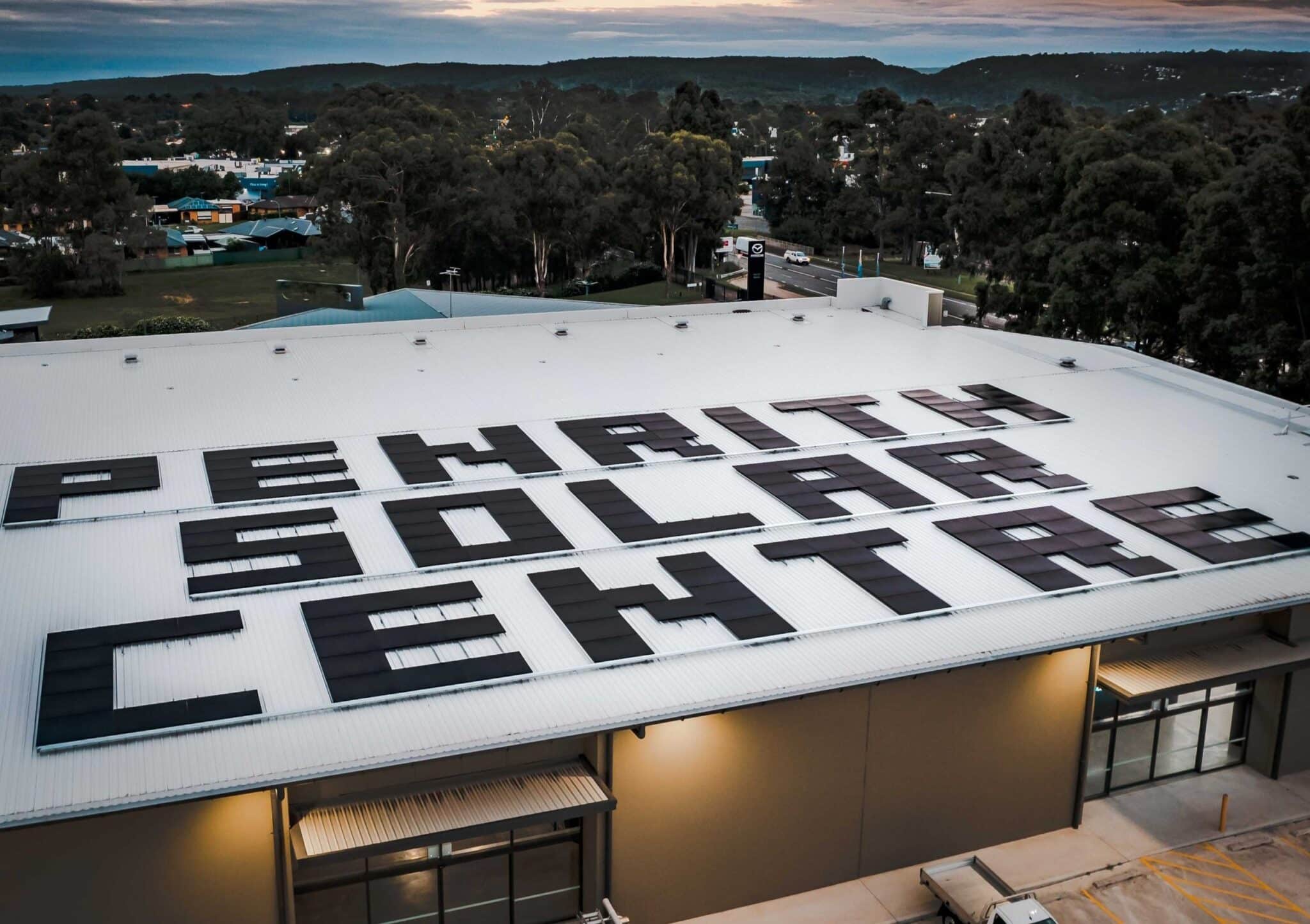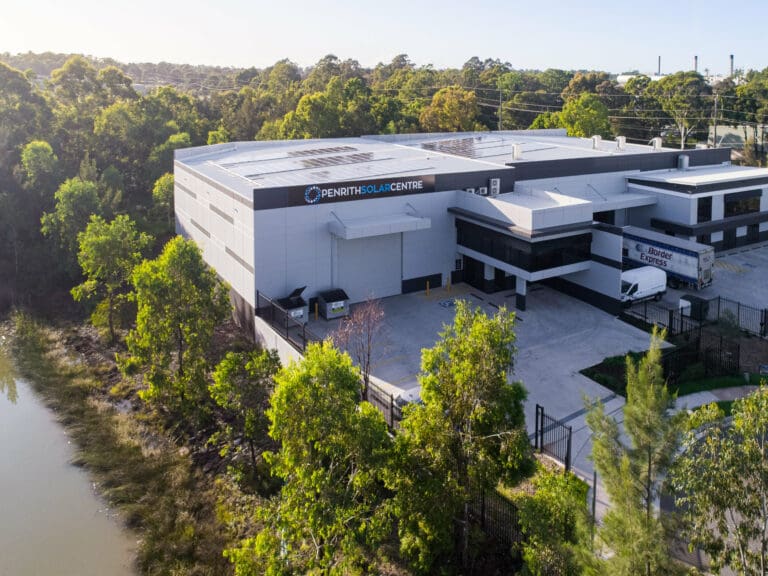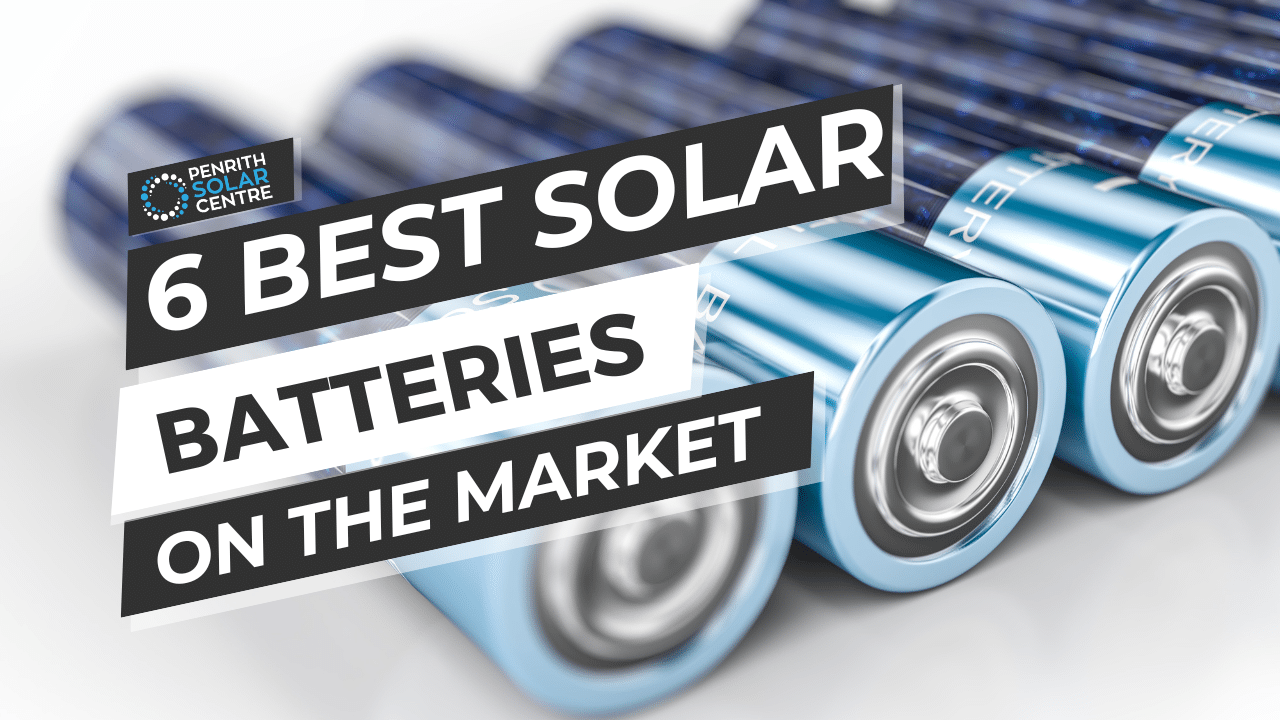
If you’re thinking about installing a solar system, you’ve certainly heard about solar batteries. Every article you’ve read (and every salesperson you’ve chatted with) has enthusiastically suggested that you get one. But there are so many different solar batteries. Which one should you choose? Why should you choose it? Where do you begin when researching them? At this stage, you have nothing but questions.
At Penrith Solar Centre, we understand how frustrating it can be at the beginning of your solar journey. The learning curve seems steep, and something as simple as searching on Google can yield untrustworthy results.
This is an unbiased guide designed to help you narrow your scope while considering options. Our priority is giving you the information you need to be an empowered shopper. Your energy usage is unique and your pathway to finding the right battery will be different from your neighbours.
In the spirit of being unbiased, it’s important to let you know that we sell two of the batteries that made the cut in our top 6 best solar batteries list: the Enphase IQ Battery 5P and the Tesla Powerwall 2. While we believe in their performance for our customers, we also realise that these are not necessarily going to be good options for your specific needs.
In this article, you’ll learn about the best solar batteries on the market in 2023. You’ll get information about the features, benefits, and drawbacks of the following brands:
- Alpha ESS
- BYD
- Enphase
- SolarEdge
- Sungrow
- Tesla
While we don’t install all these battery brands, we do believe that educating solar enthusiasts is critical for building a cleaner, greener future. So without reservations, here is a brief walkthrough of the best solar batteries on the market.
Guide to Our Guide
We’ve listed the 6 batteries in this class alphabetically. We’ve also included links to company websites and product information for your researching convenience.
Here’s how the specs for each battery are broken down:
Overview: Each battery will have a brief introduction/overview of the company and the battery you’ll be reading about.
Then we’re going to get into the specifics of each battery.
Weight: the weight of the battery in kg.
Round-trip efficiency: This is a measurement of how much electricity is lost as a solar battery performs its functions. The chemical reactions within the battery require energy, so there is some loss of power as the electricity is converted. A battery with 90% round-trip efficiency loses 10% of its power in this process.

Operating Temperature: The operating temperature of the battery from coldest temperatures to hottest. It’s important to know this, especially in Australia, where extreme heat can impact the efficiency of your solar battery. If you want your solar battery installed outside, this can be a significant issue to consider as you shop around.
Warranty: How long the warranty lasts and other warranty small print.
Compatibility: The compatibility of the battery. When we talk about battery compatibility, there are two types of “coupled” batteries. They are either AC-coupled or DC-coupled. Our guide will include whether the battery is AC-couple or DC-coupled.
But first, it would probably be helpful to go on a little walk to understand what the difference between these two types of batteries is, and what it means for you as a customer.
Solar panels convert sunshine into DC power. Your home and the electrical grid use AC power to operate. And a battery can only store DC energy. So the conversion process is from DC to AC to DC again. For a more detailed understanding of how solar systems work, from sunlight to your appliances, you might want to check out this article on how solar energy works.
It can get a little confusing to summarise, all that converting from AC to DC and back again. Here’s a picture of the way electricity flows through your solar system if you have an AC-coupled battery:
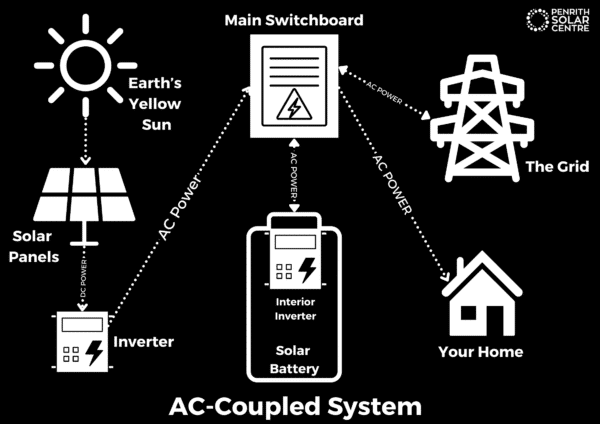
In an AC-coupled system with a battery, the solar panels collect the DC power and a microinverter mounted beneath the solar panel converts the DC power to AC power. This is a much safer form of electricity. AC power has fewer risks involved as it travels from the roof to your main switchboard. If you’re interested in learning more about that, you might want to check out our article on the benefits of a microinverter system. The home and the grid operate on AC power.
It can get confusing when a battery enters the equation. Batteries can only store DC energy. Some brands of batteries are DC-coupled to more efficiently direct and store electricity for use. They do not require converting the DC power to AC power because the electricity doesn’t flow immediately to the main switchboard.
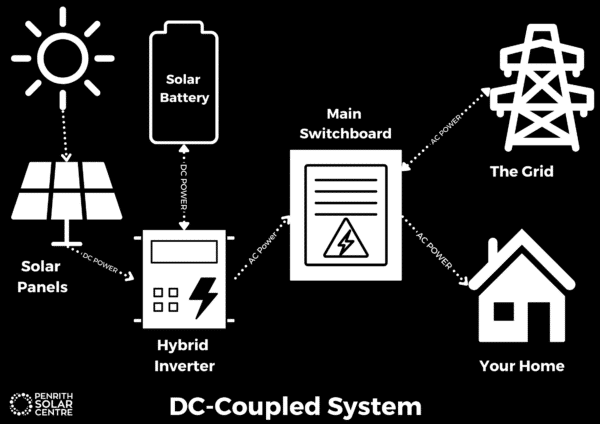
Instead, it goes to an inverter, usually located on the side of the house. That inverter converts the DC power to AC power if it’s going to the switchboard, but if it’s going to the battery, it leaves it alone. This leads to better round-trip efficiency in DC-coupled batteries.
Energy Storage: The energy storage of the battery in kWh (kilowatt hours).
Power Output: The power output of each battery in kW (kilowatts).
There is a difference between energy and power. Some solar “experts” use the terms interchangeably, which is wrong. When electricity is in motion, like in a cable going from the solar panels to the home, it is power. When that same electricity is stored, like in a battery for later use, it is energy. Think of it like water following the path of least resistance: power flows through a hose and energy is stored in a bucket.
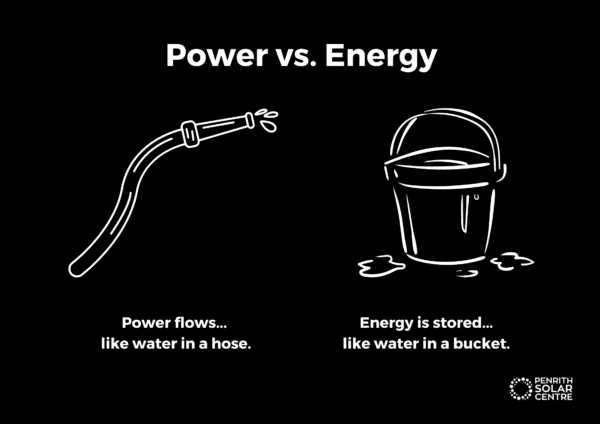
Pricing: Many of the prices listed are subject to change depending on who is installing the equipment. Some installers charge more for services, and some solar systems require additional equipment. What’s listed is the price for the equipment only from the respective company’s websites.
Who Is This Battery a Good Fit For? Everyone has different needs for batteries based on their unique energy self-consumption patterns. It’s difficult to dilute those needs down to a thumbs up or down. Because of this, there’s a brief summary for those who might want to research the product further.
Alpha ESS
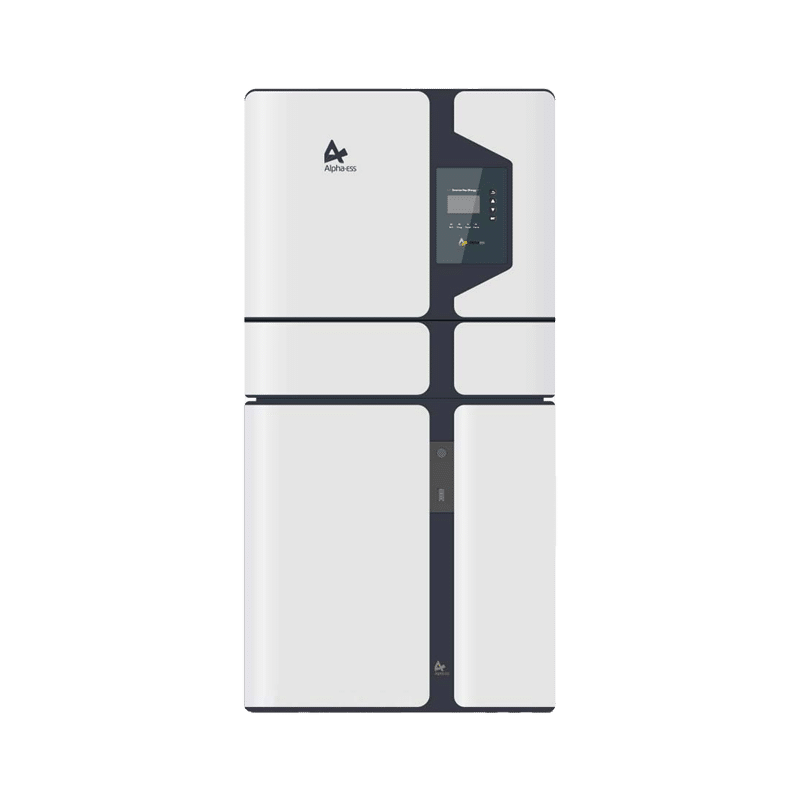
Alpha Ess has been around since 2012. It’s a Chinese company with offices in Australia, the UK, Germany, and Italy. The Australian product line is the SMILE series, with the Alpha ESS SMILE5 being the best-seller.
Alpha ESS SMILE5 Batteries: The SMILE stands for
Self-sufficient
Modular
Intelligent
Long lifespan
Elegant
The battery is an economical option for homeowners. It’s lithium-ion phosphate, one of the safest batteries on the market. There are four different product choices in the SMILE5 series. The smallest stores 2.9 kWh with the biggest at 13.3 kWh. The following specs are for the 10.1 kWh, one of their best-selling options in Australia.
Weight: 122.7 kg
- Round-trip Efficiency: 92.72%
- Operating Temperature: –10°C to 50°C
- Warranty: 5 year product warranty, 10 year battery performance warranty. It’s important to note that it’s a requirement that the battery be connected to the internet so Alpha ESS can monitor the battery’s performance. If the battery is not connected to the internet or if it’s disconnected from the internet for longer than 48 hours (in an electrical grid blackout, for example) without reporting it to Alpha ESS, the warranty is reduced to 3 years.
- Compatibility: AC-coupled or DC-coupled
- Storage: 10.1 kWh.
- Power Output: 5 kW
Pricing: Excluding installation costs, the SMILE5 10.1 kWh is $7,458.
Who is the Alpha ESS SMILE5 a Good Fit For? If you already have a solar system installed, the Alpha ESS SMILE5 is aimed at you. You can choose an AC-coupled model or a DC-coupled model, which means it can be installed with any solar system depending on your needs. This high compatibility makes SMILE5 a great option.
It’s also a favourable option if you’re on a budget. However, a quick Google search will yield mixed reviews here and here of its quality. Some customers are thrilled with the low cost while others are frustrated by poor customer service from Alpha ESS. There are also a lot of models available in Australia, each with different specs and features that vary slightly. Make sure you have the correct make and model number if you research it further.
BYD
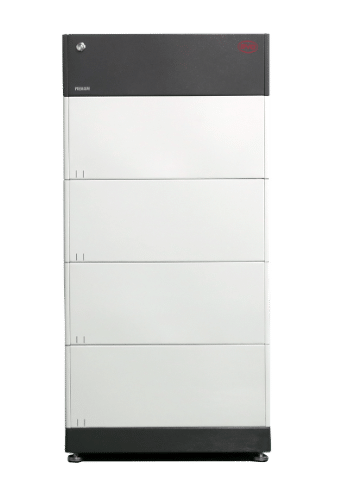
BYD is an award-winning solar battery manufacturer that’s been around since 1995. Their name, BYD, stands for Build Your Dreams. They started out in China, but now have locations in Europe, the United States, Australia, and South Africa. They’re one of the largest manufacturers of lithium-ion batteries in the world.
Battery Box Premium: BYD’s Battery Box line of solar batteries is aimed at residential customers. The batteries are unique in that they are customisable by stacking individual modules on top of each other.
There are three components to a BYD battery stack: the base, the batteries, and the battery conditioning unit on the top. This makes it easy to install and upgrade them. Each module stores about 2.5 kWh of energy. The more you stack, the more storage you’ll have.
The HVS models range from 2 – 4 modules for a range from 5.1 kWh – 12.8 kWh. HVS batteries are expandable in increments of 2.56 kWh. For the basis of this comparison, we’re going to be looking at the Battery Box Premium HVS 12.8 kWh stack which is 5 modules. It’s important to note that BYD offers customers a variety of batteries for their homes: a high and low voltage option.
- Weight: 205 kg
- Round-trip Efficiency: 96%
- Operating Temperature: –10°C to 50°C
- Warranty: 10 years
- Compatibility: DC-coupled
- Storage: 12.8 kWh
- Power Output: 5 kW
Pricing: $13,500 excluding installation costs
Who is BYD a Good Fit For? If you think your home energy storage needs are going to increase over time, you might want to investigate the BYD Battery Box. The stackable design is great for customising to your exact energy needs.
If you have a hybrid inverter solar system, BYD will be a good fit for you because it is a DC-coupled battery. It’s wildly compatible with a variety of hybrid inverter brands including Fronius, SMA, Goodwe, Sungrow, and others.
If your energy storage needs are high, this battery is a good direction to go in because it’s easy to upgrade. Similar to the HVS model, is the HVM model which is stackable up to 22.1 kWh.
Enphase IQ Battery 5P
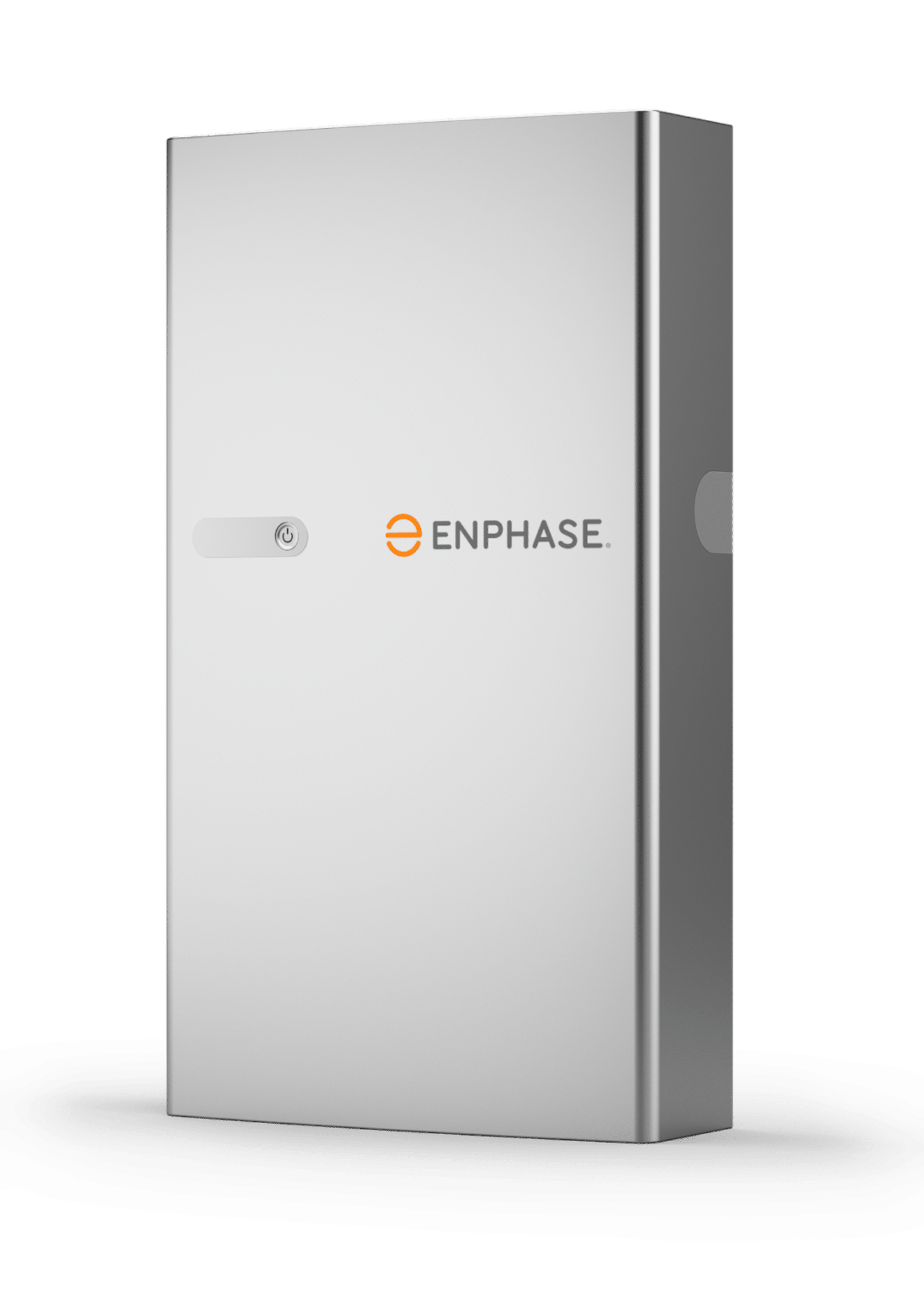
Enphase IQ Battery 5P: Enphase Energy is an American company whose claim to fame was the development and wide-scale distribution of microinverters for solar panels. A microinverter is a small inverter that is mounted to each solar panel. It converts DC electricity to AC electricity for distribution to the home.
A special distinction about the Enphase IQ Battery 5P is that it has 6 microinverters installed inside the battery itself. They decentralize the charging and discharging of the battery and the conversion from DC power to AC power and back again. If one of those microinverters fail, the battery can continue to charge and discharge at just over 80% efficiency.
We’ve written quite a bit about the Enphase IQ Battery 5P. If you’re interested in reading more about it, we suggest you check out this review of the Enphase solar battery and this article on how much an Enphase battery costs at Penrith Solar Centre.
- Weight: 66.3 kg
- Round-trip Efficiency: 90%
- Operating Temperature: –15°C to 55°C
- Warranty: 15 years or 6,000 cycles
- Compatibility: AC-coupled
- Storage: 5 kWh
- Power Output: 3.84 kW
Pricing: $6,300 plus installation costs and a system controller, which is $1,200.
Who Is This Battery a Good Fit For? If you have an existing Enphase solar system or are keen on installing one with a battery, this is a great option. Unfortunately, it’s only compatible with other Enphase technologies, so if you have a string inverter solar system for instance, you’re best to look at other battery options. Because it only stores 5 kWh, you’ll need to “stack” multiple batteries (which is fairly easy) together to get more energy storage.
SolarEdge
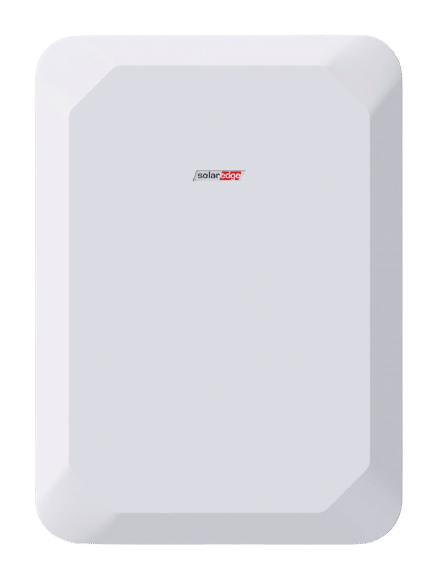
SolarEdge is a company founded in 2006 and made a name for itself by inventing the DC optimiser technology that’s used in some string inverter solar systems. They have offices worldwide, including Australia. For more information on what a DC optimiser is and what it might do for your solar system, check out our article comparing String Inverters vs Microinverters vs DC Optimiser: How Are They Different?
SolarEdge Home Battery: The SolarEdge Home Battery is designed for, well, homeowners looking for energy storage solutions who have a SolarEdge string inverter system already installed.
- Weight: 121 kg
- Round-trip Efficiency: 94.5%
- Operating Temperature: –10°C to 50°C
- Warranty: 10 years
- Compatibility: DC-coupled
- Storage: 10 kWh
- Power Output: 5 kW
Pricing: This fluctuates depending on where you look for information. Because the website does not offer pricing, different reviews quote a range between $10,000 – 13,000 before rebates, which will vary depending on where you live.
Who is SolarEdge a Good Fit For? SolarEdge is one of the biggest solar panel companies operating in Australia. Its batteries are only compatible with SolarEdge systems, but if you want to install a SolarEdge system, the company has a large presence here.
The SolarEdge hybrid inverter is considered the best overall inverter by many for string solar systems. When combined with a SolarEdge battery, the whole system is incredibly efficient. It’s possible to stack up to three batteries together, but you’ll need to purchase a DC Combiner Box from the company in addition to an inverter. We would love to let you know how much that additional equipment will cost, but like the battery, SolarEdge does not list the price on their website.
There is also the issue of what type of inverter you have on your SolarEdge string solar system. If you are adding a battery, you’ll need to upgrade your inverter as well for additional cost.
Sungrow
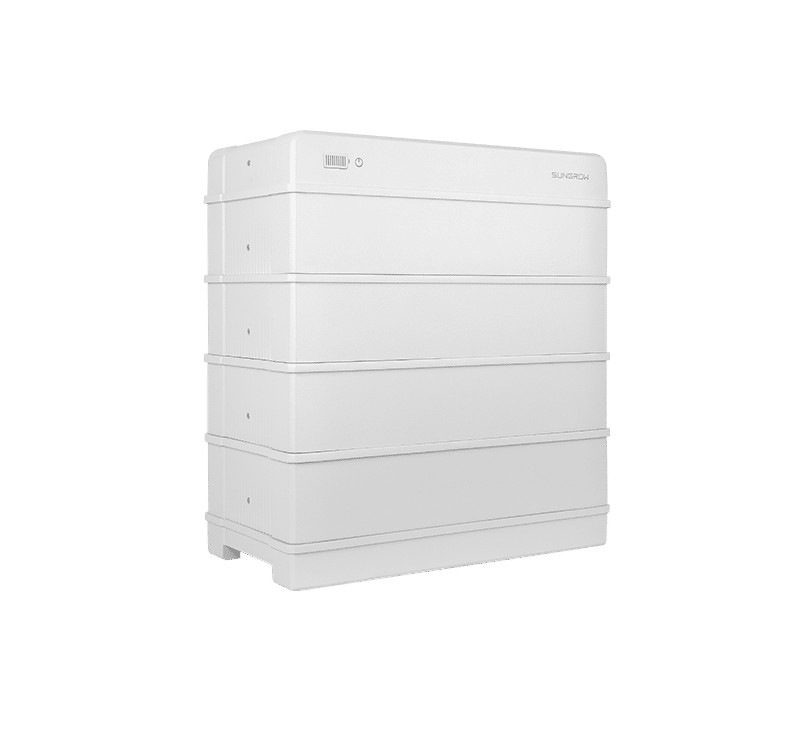
Sungrow has a unique history as a company compared to other solar battery manufacturers. It was founded in 1997 by a professor, Cao Renxian, of Hefei University of Technology in China. The mission was to improve energy solutions in western China.
Sungrow SBR HV Batteries: The Sungrow High Voltage LFP Battery is a lithium-ion phosphate battery with a modular design. This modular design makes your energy storage easily upgradable if your energy needs change. Just purchase and stack additional battery modules. Each battery module has a capacity of 3.2 kWh and is expandable up to 8 in a stack for 25.6 kWh. Then, four of those stacks can be combined for a whopping 102.4 kWh of storage.
For the purpose of this comparison, we’re going to be looking at the Sungrow SBR HV 12.8 kWh option as its closest to the other batteries in its class that we’re comparing. This is a four-module combination that you would purchase all together.
- Weight: 147 kg
- Round-trip Efficiency: 93.3%
- Operating Temperature: –30°C to 50°C
- Warranty: 10 years
- Compatibility: DC-coupled
- Storage: 12.8 kWh
- Power Output: 7.68 kW
Pricing: $9,500 plus installation.
Who is Sungrow a Good Fit For? Sungrow really made a name for itself with its hybrid inverters. Because their solar business is primarily hybrid inverters, it should come as no surprise that Sungrow batteries are only compatible with Sungrow hybrid inverters.
If you have a string solar system, you’ll need to purchase a Sungrow hybrid inverter to direct traffic for the electricity supplied to your home. So if compatibility with an existing solar system is important to you and you don’t want to invest in a Sungrow hybrid inverter, you’ll want to look elsewhere.
Tesla Powerwall 2
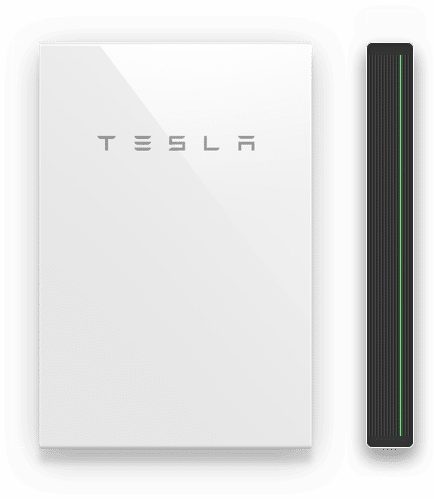
Tesla was founded in 2003 as an electric vehicle company. It quickly expanded into commercial and home energy battery storage. The first Powerwall came out in 2015, and the Powerwall 2 was hot on its heals in 2016 with multiple upgrades since then.
Our favourite thing about the Tesla Powerwall 2 is that it is completely brand-agnostic in terms of compatibility. You can bolt onto any solar system in the world, and it will function beautifully, exactly as it’s designed. If you want to explore the Powerwall 2 a little more comprehensively, you might want to check out our Tesla Powerwall 2 Review or this article on whether or not a Powerwall 2 is worth it.
In addition to the Enphase IQ Battery 5P, Penrith Solar Centre also sells the Tesla Powerwall 2.
The Tesla Powerwall 2 is a lithium-ion battery with advanced safety features that minimise fire risk.
- Weight: 114 kg
- Round-trip Efficiency: 90%
- Operating Temperature: –20°C to 50°C
- Warranty: 10 years
- Compatibility: AC coupled but requires a separate solar inverter.
- Storage: 13.5 kWh
- Power Output: 5 kW
Pricing: The Powerwall alone costs $10,400, but you’ll also need a Tesla Gateway which costs $1,700, which brings the cost to $12,100. And don’t forget installation costs.
Who is the Tesla Powerwall 2 a Good Fit For? The Powerwall is a popular choice for a solar battery in Australia. The Powerwall 2 is an AC-coupled battery, which is widely compatible, which we mentioned above.
If the installation site has a complex design, like solar panels on a detached garage or shed in addition to the home with both arrays feeding into the same battery, the Powerwall 2 is an ideal choice. It’s sophisticated programming can differentiate between different solar systems and even different solar brands.
Things to Consider When Choosing a Solar Battery
Every battery, like every solar system, is unique. What works for one home or business will be different for another. Each of these solar batteries are fantastic products that may or may not suit you. The decision will always come down to what you need.
If you’re scratching your head about which battery to choose, ask yourself the following questions:
- Is your solar system already installed, or are you installing a new system with a battery included?
- How much storage capacity do you need for your energy consumption patterns?
- How much money do you want to spend on a battery?
You’ll be able to narrow down your choices once you get more and more specific about your needs.
If you’re looking for an AC-coupled battery that’s compatible with microinverter solar systems, then the Enphase IQ Battery 5P or the Tesla Powerwall 2 might be perfect for you.
For solar systems that are already installed and need a highly compatible battery at a low cost, the Alpha ESS SMILE5 might be your best option.
Sungrow offers stackable battery technology that will help you zero in on your specific energy storage needs. It’s also good for an existing string solar system looking for an upgrade.
SolarEdge is a good way to go if you’re considering installing a whole system at once; from panels to battery. Much like Enphase, it’s only compatible with its own brand.
BYD is a great solution for customising your storage capacity. This modular battery can expand up to some significant sizes if you’re looking for larger storage solutions. Keep in mind that you’ll need a hybrid inverter to get the most out of these batteries. Fortunately, it’s compatible with a wide variety of them.
At Penrith Solar Centre, we understand that this is a lot of information to digest. We’ve provided some details here about different solar battery brands. If you’re interested in learning about what to look for in a solar battery that includes some deep dives into information we had to summarize in this article, check out this post about 7 Considerations for Choosing a Solar Battery.
